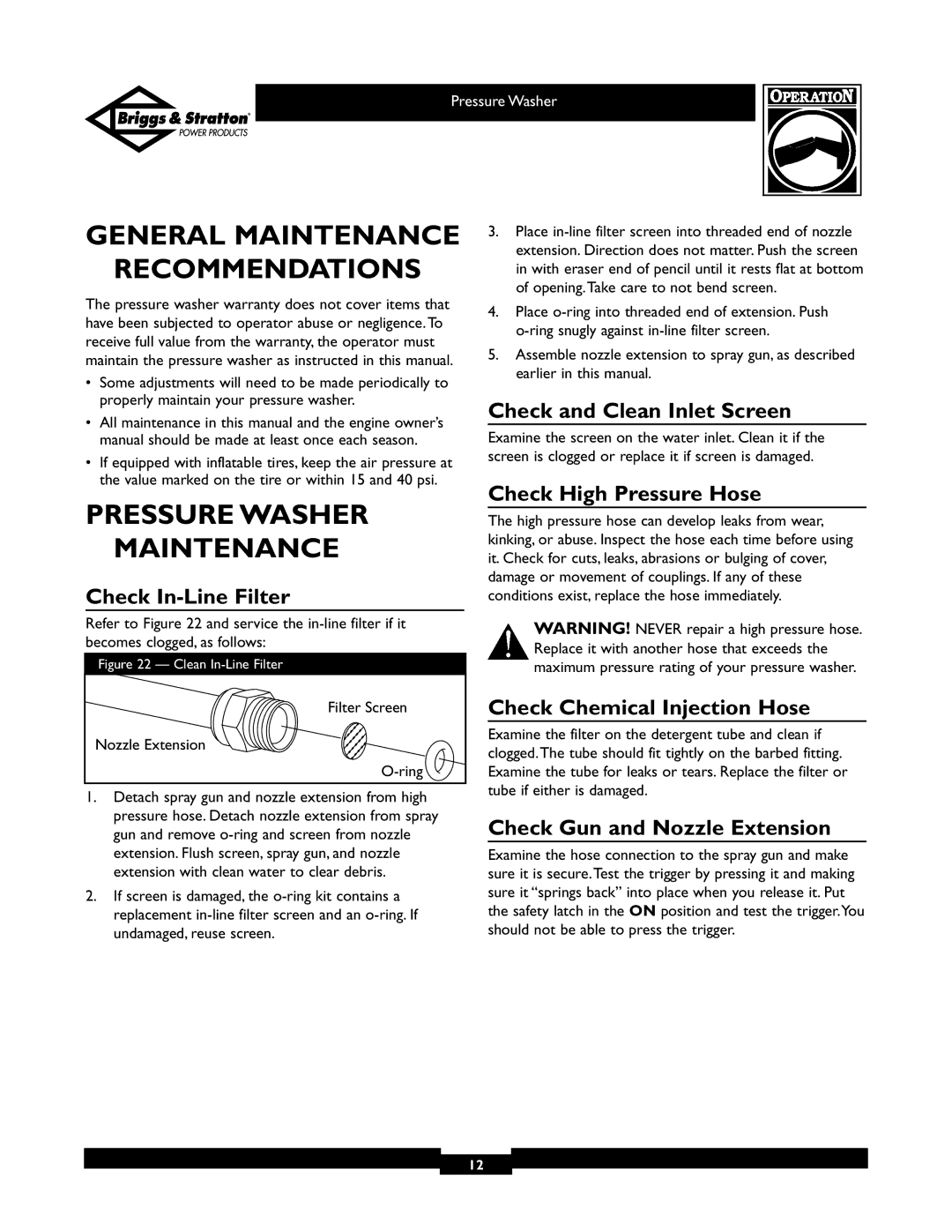01806, 01805 specifications
Briggs & Stratton is a renowned name in the world of small engines, famously known for producing reliable and efficient power solutions for various applications. Among their impressive lineup, the models 01806 and 01805 stand out, designed to meet the demands of both consumers and professionals alike.The 01806 model features a powerful engine with a displacement of 500cc, delivering exceptional torque and horsepower that make it suitable for a variety of applications, including lawn mowers, generators, and other outdoor equipment. Its superior performance is complemented by a user-friendly design, making it easy to operate even for those who are not mechanically inclined.
One of the key features of the Briggs & Stratton 01806 is its innovative READY START technology. This system eliminates the need for choke adjustments, allowing for effortless starting in any weather condition. Users simply pull the starter rope, and the engine fires up with ease, providing convenience for individuals who may find traditional starting methods cumbersome.
Another notable attribute of this model is its OHV (Overhead Valve) design. This technology provides better fuel efficiency, enhanced power output, and lower emissions compared to traditional flat-head engines. An OHV configuration allows for better airflow, resulting in improved combustion and overall performance.
The 01805 model also boasts similar features but comes with slight variances in horsepower and specifications tailored for specific applications. While both models emphasize durability and reliability, the 01805 is designed with lightweight construction, making it an ideal choice for equipment that requires portability without sacrificing power.
Both models feature heavy-duty components, such as a single-piece crankshaft and a contained air filtration system that protects the engine from debris, extending its operational longevity. Their compact size and clever engineering ensure they fit in a variety of applications seamlessly while providing maximum output.
In summary, the Briggs & Stratton 01806 and 01805 are exemplary models crafted for efficiency and reliability. Their advanced technologies cater to the needs of users seeking both power and ease of use. Whether for residential or commercial applications, these engines strive to uphold the prestigious reputation synonymous with the Briggs & Stratton name. The combination of reliable starting, efficient design, and durable construction ensures that these engines keep working year after year, providing outstanding performance across various tasks.

